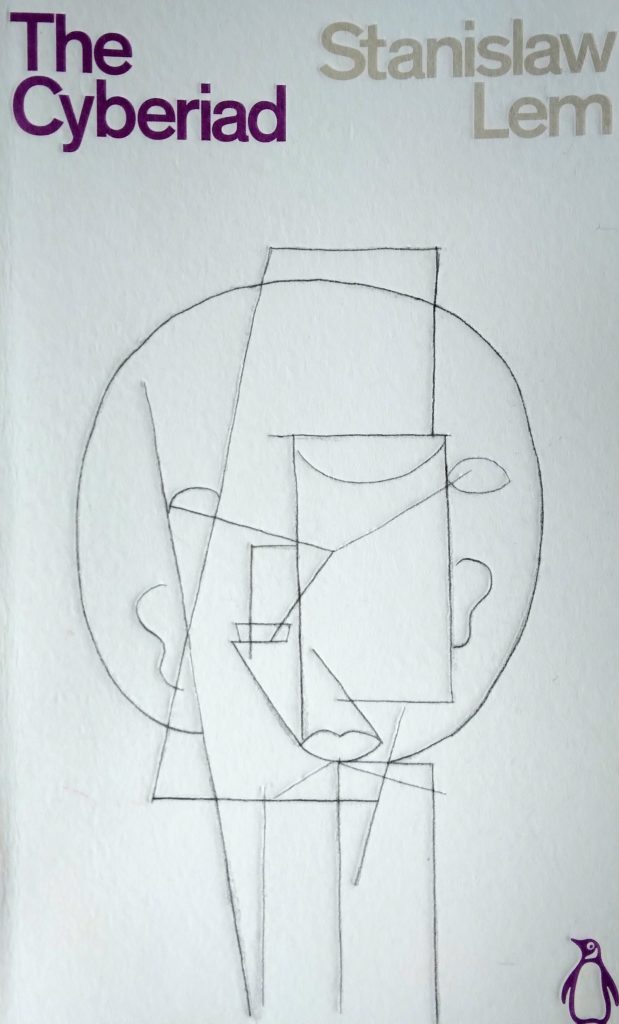By Stanislaw Lem

I got this one new from the evil empire, Amazon, full price. I guess I just haven’t been finding much of note in the bargain bins. Anyway, what follows are my excuses: I was in a hurry. I had seen it described on some Youtube list or other, as influential on some current, but now forgotten scifi sub-genre. I think it must have been robots, AI and the like. Anyway, I can’t pass up good robot stories, so I felt justified in the expense for this one. I am a slow reader, mainly because I can never find the time, except bedtime which means I nod off half way through each sentence and am forced to reread them over and over again. Fortunately I was in the hospital, unable to sleep or go anywhere. It should be telling that this critic is so averse to reading that he must be forced to do so. Fortunately for this blog, my recent infirmity has afforded me the time to read 2 books within the span of 2 weeks (see my review of Out of the Silent Planet).
Nearly all of these ‘Fables for the Cybernetic Age,’ revolve around a pair of Constructors, Trurl and Klapaucius (pronounced: ‘Klaw-pouch-us’ according to the first audio sample I could find on the internet). (I am a rather lazy researcher.) Nevertheless, Trurl and Klapaucius are friends, colleagues, enemies, competitors, and as we find out over time, mechanical inventors. In this universe, Constructors are machines who make machines. They are renowned across the galaxy, and build robots and other machines to for the many kingdoms that populate the vastness of space. Their deeds and comical exploits are described in the short tales that make up The Cyberiad.
The original, published in 1965, was written in Polish. The remarkable English translation by Michael Kandel seamlessly illustrates Lem’s talent for wordplay and the word salad. This is best seen in the story titled, Trurl’s Electronic Bard. Trurl’s machine after some tweaking, successfully meets the challenge by Klapaucius, to create a verse about a haircut, but full of, “treachery, retribution, quiet heroism in the face of certain doom! Six lines, cleverly rhymed, and every word beginning with the letter s!!”
There is no doubt in my mind, and having done as little research (and proofreading) as possible, that Lem’s humor and absurdity influenced Douglas Adam’s Hitchhiker’s Guide to the Galaxy series. In my uneducated opinion, there is a direct link between Adams’ Deep Thought Computer and the machine in Lem’s story, Altruizine. Here Trurl builds a machine to simulate beings who have reached the Highest Possible Level of Development, or H.P.L.D. The beings being simulate are at such a high level, they refuse to answer the questions posed to them, however Trurl believes that a machine simulation could be coaxed into sharing its enlightened knowledge. Mayhem and hilarity ensues.
In The Cyberiad, humans are referred to as pale-faces, and they are rarely seen owing to their revoltingly wet and squishy nature. They are evolutionary forebears of machines, but since machines now program their own progeny, humans are relegated to the cosmic backwaters. The Universe is populated largely by machines, albeit with mostly the worst of human qualities. The human reader is provided a unique mirror, which is soft focus, satirical, and at a comfortable arms length, where the absurdities of our own cultures, societies, and conventions can be discussed in safety. Like all robot stories, this really about us isn’t it?